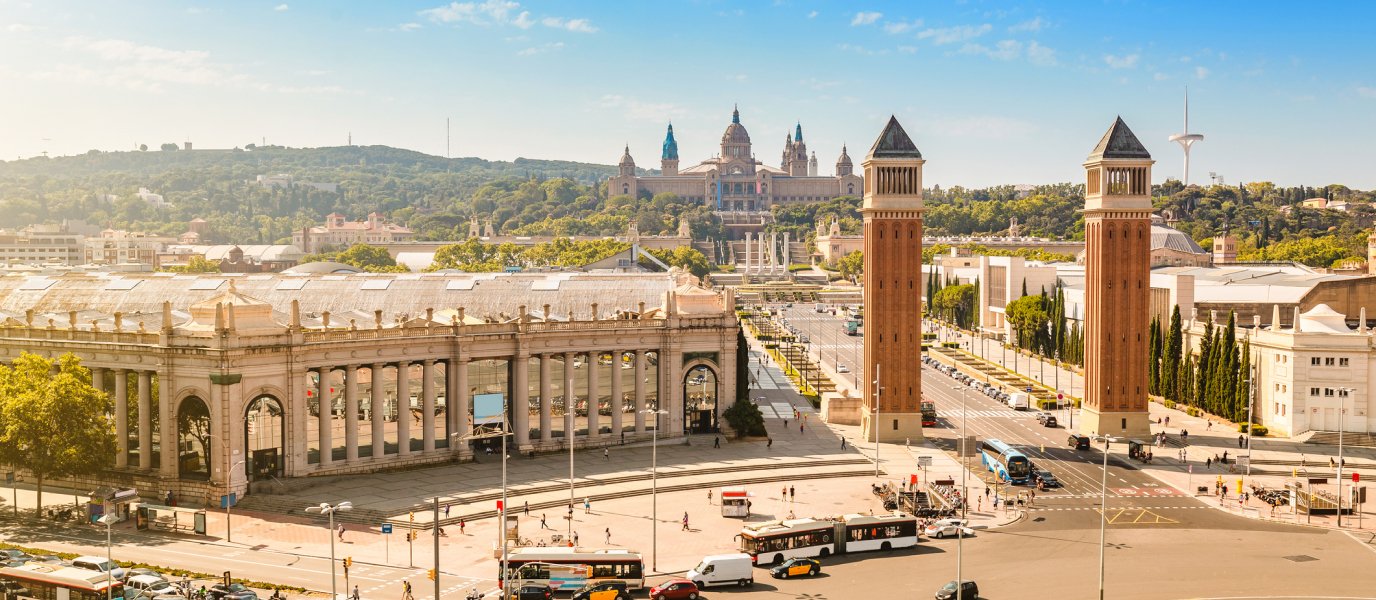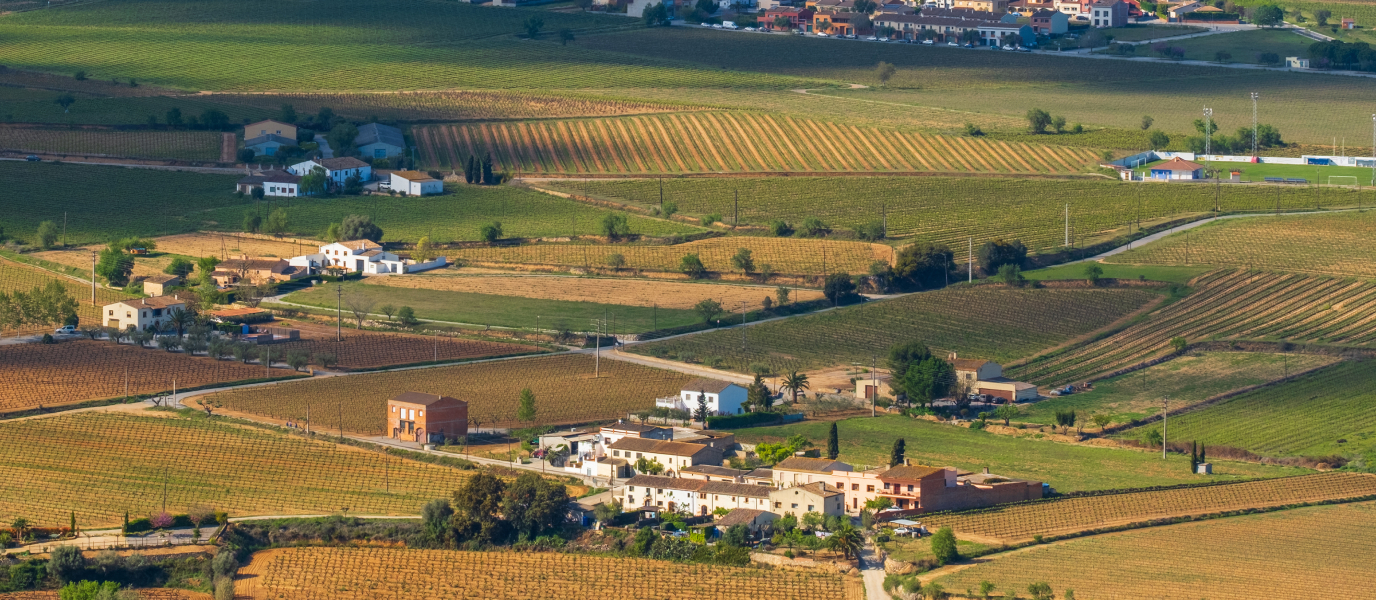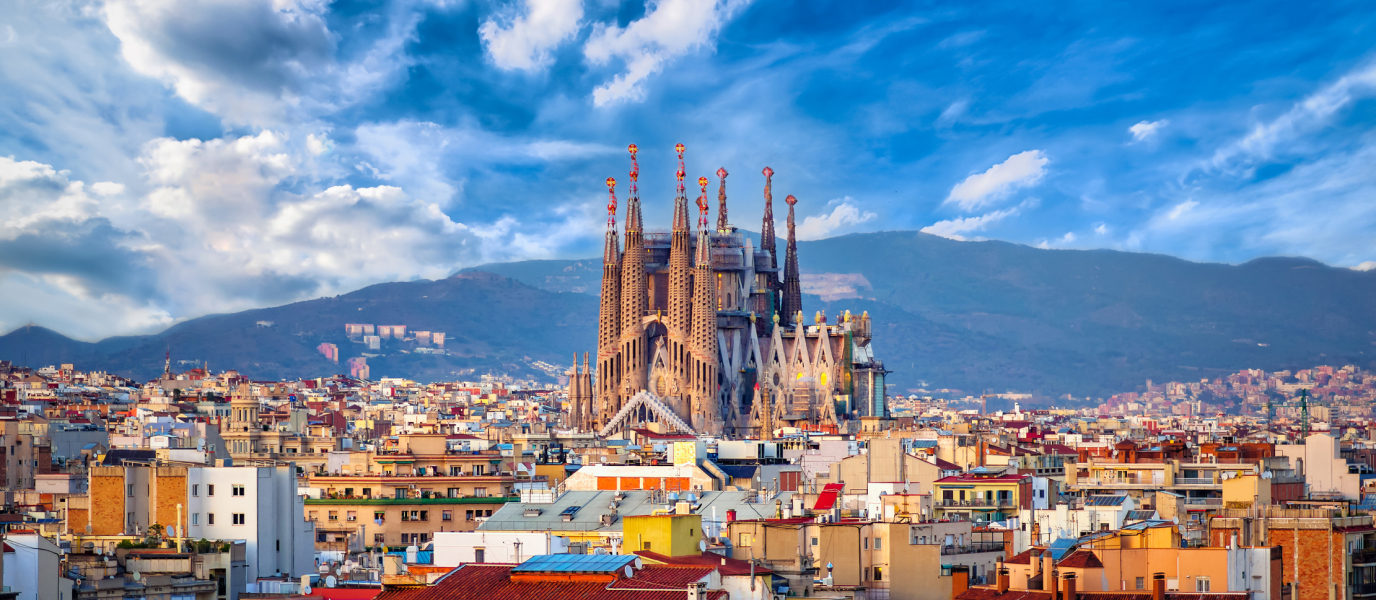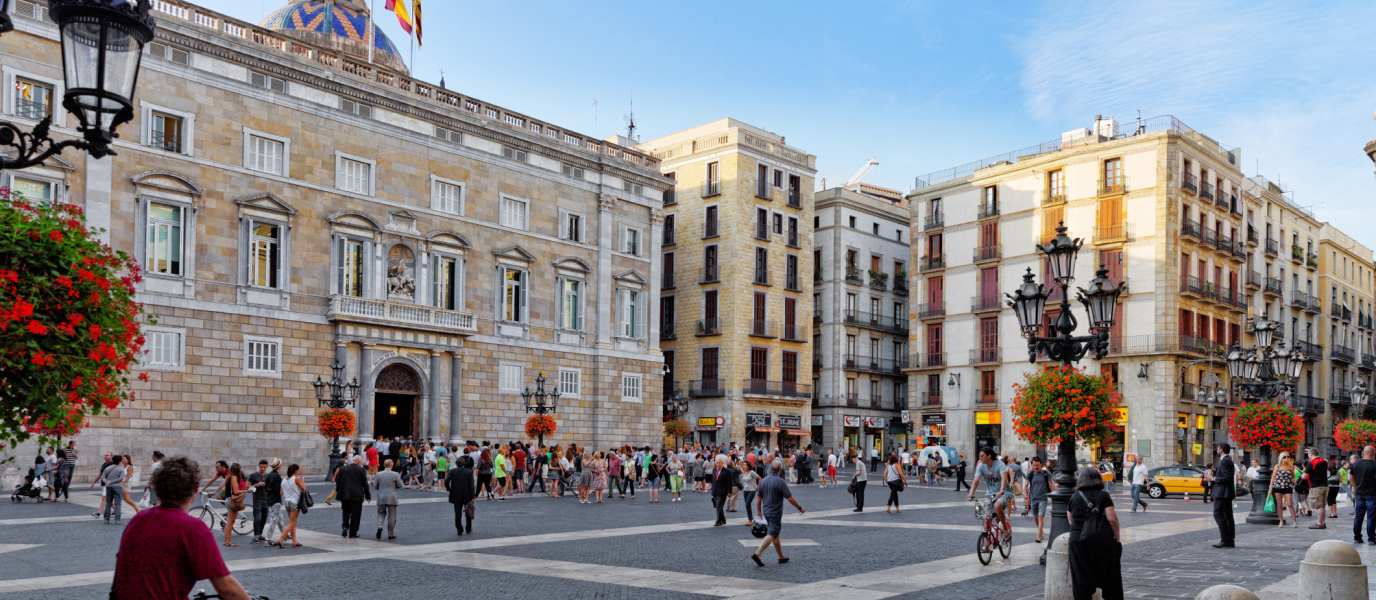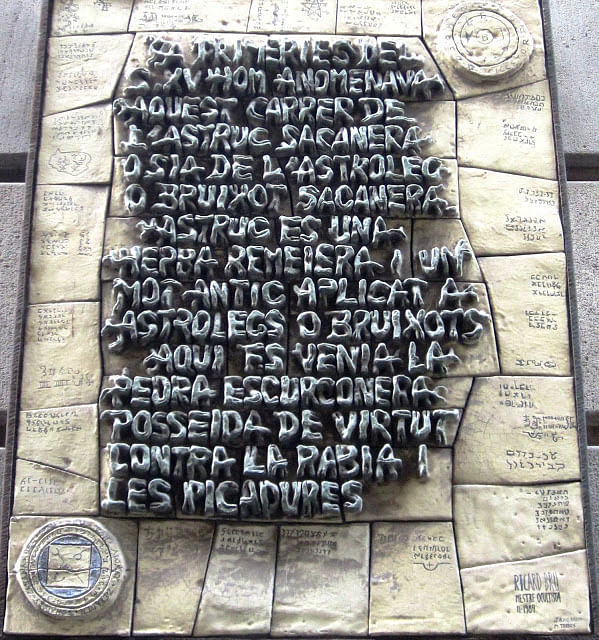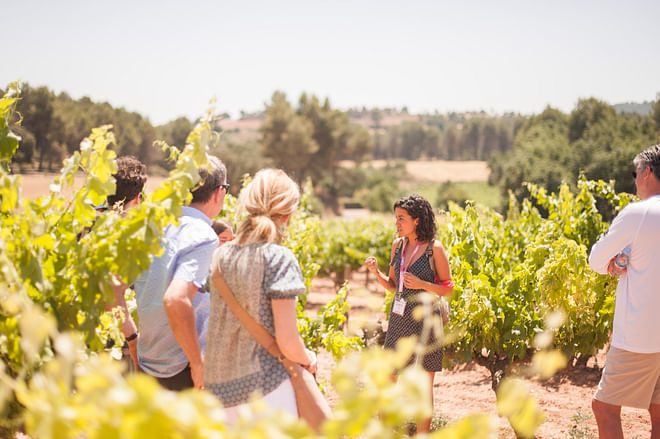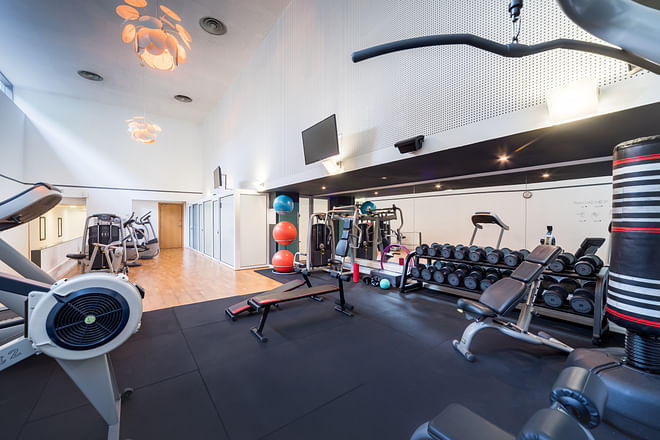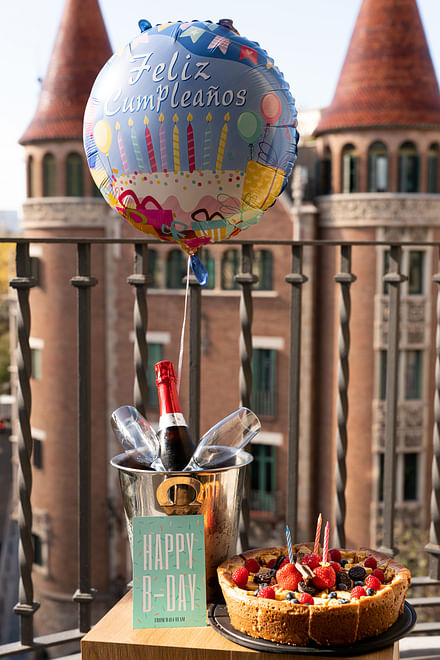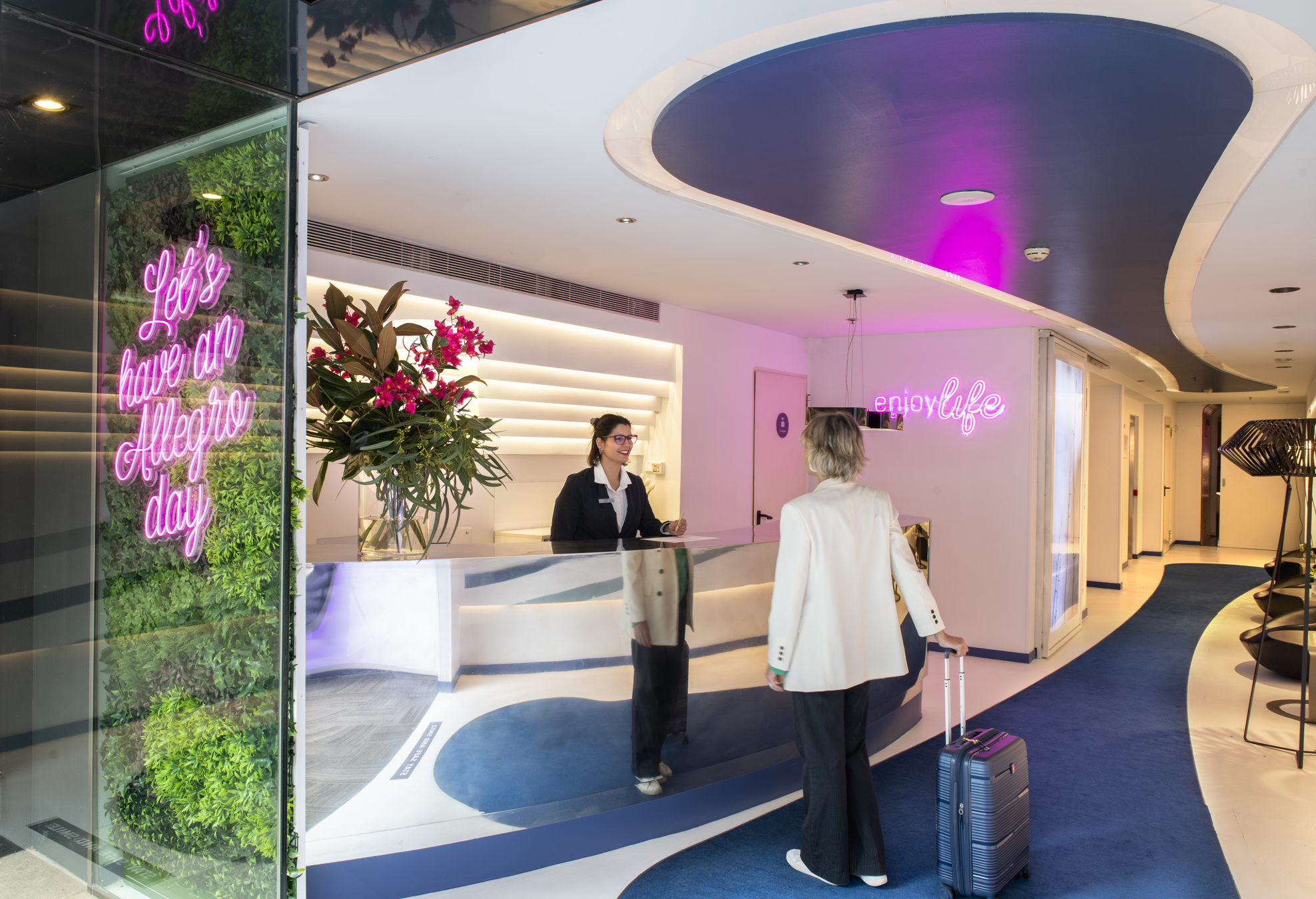Built for the 1929 Universal Exposition, Plaça d’Espanya in Barcelona is the second largest in Spain after Madrid’s Plaza de España, spanning 34,000 square metres. Situated at the foot of Montjuïc hill, the architects Josep Puig i Cadafalch and Guillem Busquets (the works were completed by Antoni Darder) proposed creating a monumental plaza that would serve as an intersection for Barcelona’s major thoroughfares—the Gran Via de les Corts Catalanes and Avinguda del Paral·lel. Plaça d’Espanya was also the gateway to the Montjuïc complex where the great exposition was held. Today, it is the site of the Fira de Barcelona, one of the largest and most important urban exhibitions spaces in the world.
The Venetian Towers and the fountain on Plaça d’Espanya
The huge circular plaza boasts various Italian-influenced features. Partially surrounded by a hemicycle of Baroque columns, the image of St. Peter’s Square in the Vatican City immediately comes to mind. The twin Venetian Towers that flank the starting point of Avinguda de la Reina Maria Cristina, designed by Ramon Reventós to mark the entrance to the compound of the 1929 fair, are directly inspired by St Mark’s Campanile in Venice.
In the middle of the plaza, right where a cross formerly stood marking the boundary of the city on the old Madrid road, is a classically-inspired monumental fountain also built for the 1929 Universal Exposition. Designed by Josep Maria Jujol, a close collaborator of Gaudí, its Baroque decoration represents an allegory of Spain. Three sets of sculptures, created by Miguel Blay, symbolise the great rivers that flow into the waters surrounding the Iberian Peninsula: the Ebro, which enters the Mediterranean, and the Tagus and the Guadalquivir, which both flow into the Atlantic Ocean, as well as the smaller rivers of the Cantabrian Sea, which are represented by child figures. The monument is topped off by an Art Deco-style cauldron designed by Frederic Llobet, which is a counterpoint to the element that the fountain pays homage to—water.
Another of Plaça d’Espanya’s most distinctive features is the former Las Arenas bullring, a spectacular neo-Mudéjar building that witnessed its last bullfight in 1977. After laying abandoned for almost 30 years it was reopened in 2011 as a large modern shopping centre and cinema. It boasts a terrace on the top floor with magnificent views of Plaça d’Espanya.
The former fair complex: the Fira, MNAC, the Magic Fountain of Montjuïc, Poble Espanyol and many more
Passing the Venetian Towers we come to the Montjuïc complex where the 1929 fair was held stretching all the way up Avinguda de la Reina Maria Cristina. Today, on what was once the site of the former pavilions, is part of the Fira de Barcelona, an extensive exhibition space spanning 400,000 m2 that plays host to 120 shows, conferences and corporate events, among them the Mobile World Congress, the Barcelona Manga Show and the Barcelona International Comic Show.
Slightly further up is the Congress Palace of Barcelona, and at the end of the avenue on Montjuïc hill is the National Palace, a monumental Classicist building opened in 1929 that was the main site of the Universal Exposition. Since 1934 it has housed the Museu Nacional d’Art de Catalunya (MNAC), which boasts important Romanesque, Gothic and Renaissance art collections. In front of the palace is the Magic Fountain of Montjuïc, a piece of ingenuity created by the architect and lighting engineer Carles Buïgas, which, since 1929, has offered spectacular displays of light and colour, with the addition of music in the eighties.
In the immediate vicinity are two more remnants from the fair that transformed the city. The Barcelona Pavilion was designed by the famous architect Ludwig Mies van der Rohe and hosted the German representation during the exposition. It is considered one of the archetypes of International Style, which set trends in the twenties and thirties. Meanwhile, Poble Espanyol is a fascinating open-air museum where you can stroll through authentic villages representing the most popular architectural styles of Spain’s different regions, from typical Andalusian towns to examples of Catalan Romanesque architecture.






































































